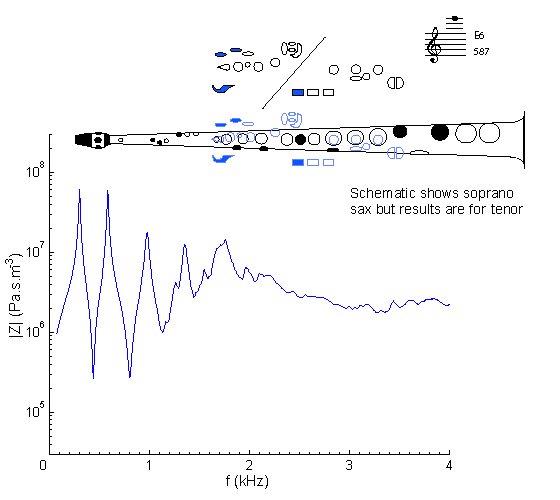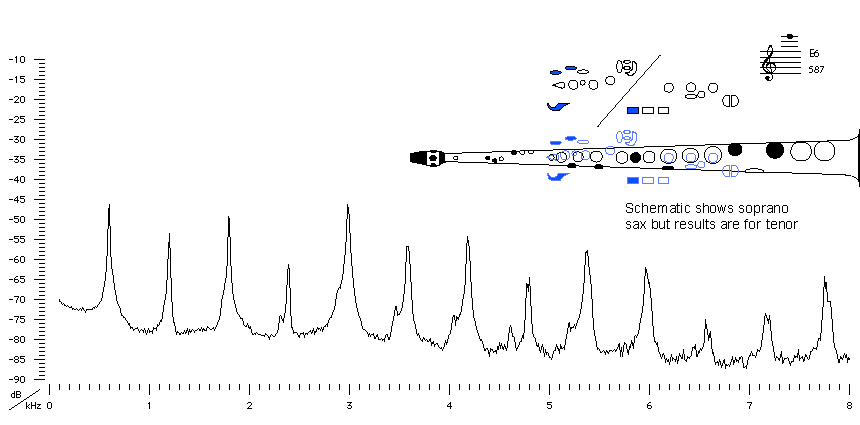| Acoustics of the saxophone |
Bb tenor saxophone |
E6 |
 |
Fingering Acoustic schematic Non-specialist introduction
to acoustic impedance Notes are the written pitch. |
In the acoustical sense, this note is still in the second register – it plays (normally) at the second peak on the impedance spectrum. This fingering uses a register hole. This causes a leak in the bore that weakens the first impedance peak (although both peaks will play comfortably with different embouchures). Above the second peak, the curve is irregular: see the discussion in cut-off frequency.
Compare with the impedance spectrum for a soprano sax on written E6: same fingering but sounding one octave higher.

Sound spectrum
of a Bb tenor saxophone
played using fingering for E6.
For more explanation, see
Introduction to saxophone acoustics.
|
Contact:
Joe Wolfe
/ J.Wolfe@unsw.edu.au |